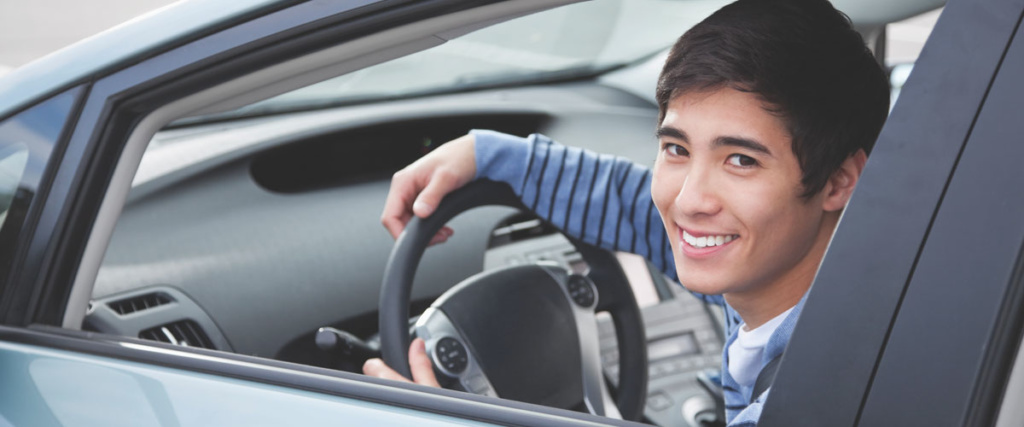Over the past several months my husband and I, and many of our fellow parents raising teenagers, entered a new reality. This new phase involves a flammable, two-ton machine that our child — whom I swear was a kindergartener just five days ago — is in control of.
My 17-year-old will be taking his driver’s test any day now. It’s a time-honored milestone with a 21st-century twist because technology has raised a whole gamut of concerns that go beyond the skills of the driver or the dangers of the vehicle itself.
My oldest son, and many of his friends, spend ridiculous amounts of time on their smartphones or other electronic devices. If he is not doing homework, playing soccer, sleeping or shoveling food into his mouth, he’s probably texting, or checking Instagram, or whatever. Homework time is not immune from cell phone use, as many teachers now use Google for sending assignments and communicating with students.
While my husband and I have set clear boundaries for usage, and monitor his interactions to a point, we know that teens don’t always make the best decisions when they are away from parental supervision. And then there are “those other kids.”
Over the past year, a number of my son’s closest friends started acquiring their driver’s licenses. Hurray for them, boo for the little voice in my head that wonders if I should be so willing to let my son jump into their cars with them. Seemingly overnight, unfamiliar vehicles began pulling into the driveway — the driver apparently thrilled to do what I had grown tired of, carting my son and his friends around. “We’re going to Tully’s!” or “Off to Caz Lake,” they would announce.
Somehow, I always resisted the urge to deflate their excitement by saying something like, “More food? You guys just ate everything in my pantry half an hour ago.” Or, “How many tries did it take him to pass his driver’s test?” Instead, I would smile and offer a cheery, “Be safe, guys! And don’t distract the driver.”
As much as I’d like to keep my son and all of his friends little forever, I know that these final high school years are important for building the relationship I will have with him as an adult. Trust is a very big part of that evolution. My husband and I, we hope, have instilled in him the ability to make wise choices — most of the time.
He needs to have experiences that enable him to test those abilities. And he needs to have them while we are still important influences on his decision-making, and able to reinforce those values every day. I can only hope that he would speak up if one of his friends started using a cell phone while driving. May is National Teen Safe Driving Month (Yes, this really is a thing), so what better time to consider some stark realities?
According to the Centers for Disease Control and Prevention, every day more than eight people are killed and 1,161 injured in crashes involving distracted drivers. Schools and driving instructors across the country have been addressing the dreadful pairing of a rite of passage and teens’ cell phones.
My son’s school is one of those with a driving simulator that can be programmed to mimic the reactions of a driver who is distracted by texting. The simulator actually answers students’ texts, heightening their urge to respond. The school initially purchased the simulator to teach students about driving under the influence — which is still being addressed.
The health teacher touted the benefits of the simulator during our recent open house night. But she also shared a frightening observation: Some students manage to beat the simulator. Their technological agility is so well formed that they can text during the simulation without crashing.
“That’s certainly not the message we want them to get,” she admitted. “I explain to them that just because they can manage to get through a simulated course one time does not mean they would be able to do the same out on the road.”
New York state’s Graduated Driver Licensing Laws were meant to give new drivers more time to learn the rules of the road — including those involving their devices. The laws currently in place for regulating cell phone use while driving have been improved since 2010. The points penalty for a distracted driving conviction was raised from 3 to 5 in 2013.
Texting while driving has been a primary driving offense in New York since 2011, but a simple run to pick up either of my sons from their schools tells an alarming story: Many adults seem to think that phone use while driving is not that big a deal. I notice people driving with phones in their hands or up to their ears every day. I can’t help but wonder if our teens are learning by example.
As I continue to see more of my son’s friends out on the road, I spend more time thinking about what else we can do to address this issue.
What will it take to persuade our teens, or any of us for that matter, to put our phones down while driving? That mutual trust I am building with my oldest son is a wonderful thing. But it doesn’t take away the worries I have every time he gets behind the wheel.





